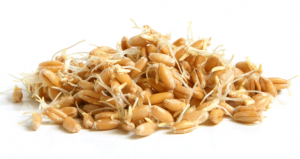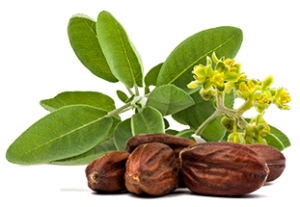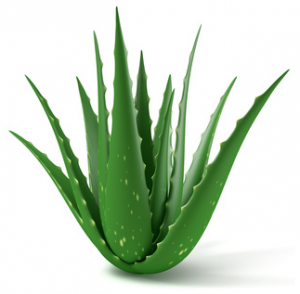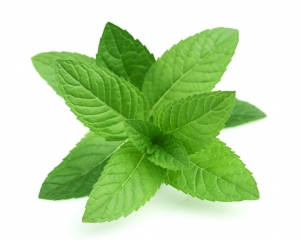After-Sun Comfort Body Cream
The weather is warming up, spring and summer are around the corner and there is nothing more attractive than a trip to the beach and a few hours enjoying the sun particularly at this time when restrictions are lifting up and we can renew with a sense of healthy freedom many of us crave after months of reduced activities. While it may be wonderful for the soul, exposure to the sun for hours at a time is definitively not an ideal scenario for the skin, particularly under the harsh Australian sun.
Even if you use broad-spectrum sunscreens, cellular damage starts as soon as you get that extra bit too much of sun. Even without a sunburn, your skin barrier can still be affected and suffer from irritation or damages from the sun rays. Typical reactions include redness, feeling of heat and dryness. And, if this happens too often, today’s sun exposure will become tomorrow premature skin ageing.
Post-sun skin products are specifically formulated to soothe and repair the skin barrier. Although they look similar, the main difference between normal moisturisers and after-sun skin care is that the after-sun products are also cooling.
After-sun formulas contain ingredients that soothe, moisturise and repair the skin. They should not be too heavy as they may actually hold the heat into the skin and prevent skin from cooling. Post-sun skin care can make a huge difference to the look and condition of your skin in summer.
PHYT’S After-Sun Comfort Body Cream
This repairing body moisturiser offers instant freshness and restore comfort to the skin after sun exposure. Crème Après-Soleil provides rapid relief and rehydrates the skin which feels instantly refreshed.
Crème Après-Soleil formula has a high content of hydrating agents combined with healing and anti-inflammatory plant oils. Peppermint oil adds its cooling and refreshing feel to the blend. These are the main active ingredients of this soothing body cream:
Jojoba oil (Moisturising, anti-inflammatory)
Long used by Native Americans for its many benefits, Jojoba oil is produced from the seed of the Jojoba plant, a shrubby tree that is native to Southern Arizona and California. Jojoba oil has anti-inflammatory properties which help to tame chafing and chapping, reduce redness caused by drying, ease the effects of sun exposure and keep skin comfortable. Jojoba is full of nutrients like Vitamin E and B, as well as antioxidants and minerals like chromium, copper, and zinc. They all nourish and protect the skin and help with damage control after exposure to the sun and other elements.
Calendula oil (healing, regenerating)
Native to the Mediterranean, Calendula officinalis, or pot marigold, is an herbaceous plant commonly used in herbal and skincare products. Thought to bloom on the first of the month, this perennial’s name comes from the Latin “kalendae” which means “little calendar” or “the first day of every month”.
Calendula flowers are orange or gold with a strong, fresh aroma. A trusted herb for many centuries, Calendula is known to have been traditionally used in Ayurvedic and Traditional Chinese Medicine.
Calendula oil provides a lasting, continuous supply of discomfort-reducing compounds: oleanolic acid, lupeol, quercetin, amyrin. These efficacious compounds have been studied and are known to provide antioxidant protection, soothe skin and reduce discomfort.

Aloe vera is a short dark green plant whose leaves have slightly serrated ridges. The aloe vera plant is native to Eastern Africa (notably Yemen, Sudan and Somalia), and is now cultivated around the world. Aloe vera extract is widely used in the cosmetics and alternative medicine industries. The earliest recorded mention of aloe vera goes as far back as ancient Egypt, 6000 years ago.
Aloe vera has a high content of water that acts as a cooling agent on skin that has been exposed to the sun. It is also rich in vitamins A, B, C D and E as well as minerals such as magnesium, potassium and zinc. These compounds are all known for their healing properties. Aloe vera contains polysaccharides that have hydrating and anti-inflammatory benefits for the skin.
Peppermint oil (cooling, anti-inflammatory)
Peppermint oil comes from the peppermint plant (Mentha piperita). The use of mint plants for medicinal purposes dates back to ancient times.
The main chemical components of peppermint oil are menthol and menthone. Menthol is a cooling agent that can help relieve that hot feeling from minor sunburns by stimulating cold receptors on the skin. Its main benefits include:
- anti-inflammatory
- antibacterial
- antiseptic
Hazelnut and Sunflower oils (keep skin hydrating, nourishing)
Hazelnut oil is full of elements that are great for your skin. The fatty acids found in hazelnuts leave your skin hydrated and with improved elasticity. These also have the benefits of helping keep that necessary moisture in. The high content of vitamin E also found in hazelnut oil is a natural antioxidant so it fights toxins in the environment while it supports the skin’s immune system and increases cell function. This oil contains calcium (good for eczema and overly dry skin), potassium (regulates water content) and magnesium (helpful in reducing and controlling acne.)
The nutrient dense Sunflower oil is extracted from the seeds of the large, sun loving flowers. Sunflower oil has been used as a natural skincare ingredient for hundreds of years all over the world. Its nourishing and moisturising properties help your skin look softer and plumber, and it keeps it protected against the elements.

Shea butter is extracted from the nuts of the Shea tree (Butyrospermum parkii), which grows in the savannah of Western Africa. Growing up to 60 feet tall, the Shea tree does not flower before it is 20 years old and can live up to 200 years. For millennia people have used it to protect their skin from the drying winds and sun as well as to heal many skin problems, minor cuts and burns.
What makes Shea butter an extraordinary skin care and amazing body healer is its richness in precious constituents, which include unsaturated fats with a large proportion of “unsaponifiables” components, essential fatty acids, phytosterols, vitamin E and D, provitamin A and allantoin. All these are natural components that make Shea butter a powerful ally to renew, repair and protect the skin against ageing and harsh climate. Shea butter is known for its antioxidant, UV protecting and skin repairing and regenerating properties – an ideal ingredient for an after-sun care and/or body moisturiser.

Vitamin E is a fat-soluble antioxidant that is essential for the maintenance of healthy skin. The primary role of vitamin E in the skin is to prevent damage induced by free radicals and reactive oxygen species. Naturally occurring vitamin E is not a single compound; instead, vitamin E is a group of molecules with related structures, some of which may have unique properties in skin.
Vitamin E is normally provided to the skin through the sebum. Topical application can also supply the skin with vitamin E and may provide specific vitamin E forms that are not available from the diet.
The use of vitamin E in the prevention of UV-induced damage has been extensively studied. Although molecules in the vitamin E family can absorb light in the UVB spectrum, the “sunscreen” activity of vitamin E is considered limited since it cannot absorb UVA light or light in higher wavelengths of the UVB spectrum. Thus, the primary photoprotective effect of vitamin E is attributed to its role as an antioxidant. Vit E is also a strong anti-inflammatory agent when applied to the skin, so soothing and calming after sun exposure.

The skin feels significantly refreshed, more elastic, nourished and smooth.
3 Hours after application of Crème Après-Soleil on their legs, women who tested this cream were still experiencing an 83% increase in skin hydration.
How to use
As to the best time to apply it, we suggest right after you shower when the skin is still slightly damp. Pat your skin dry, as opposed to rubbing which can be irritating, then apply a generous quantity to areas that feel hot. When the skin is wet, ingredients penetrate more easily in the epidermis.
Because of its cooling effect on the skin, Phyt’s Après-Soleil cream can be used any time in summer to refresh and moisturise your skin.
Tip: If you need a chilly hit after a day in the sun, keep your after-sun in the fridge…










